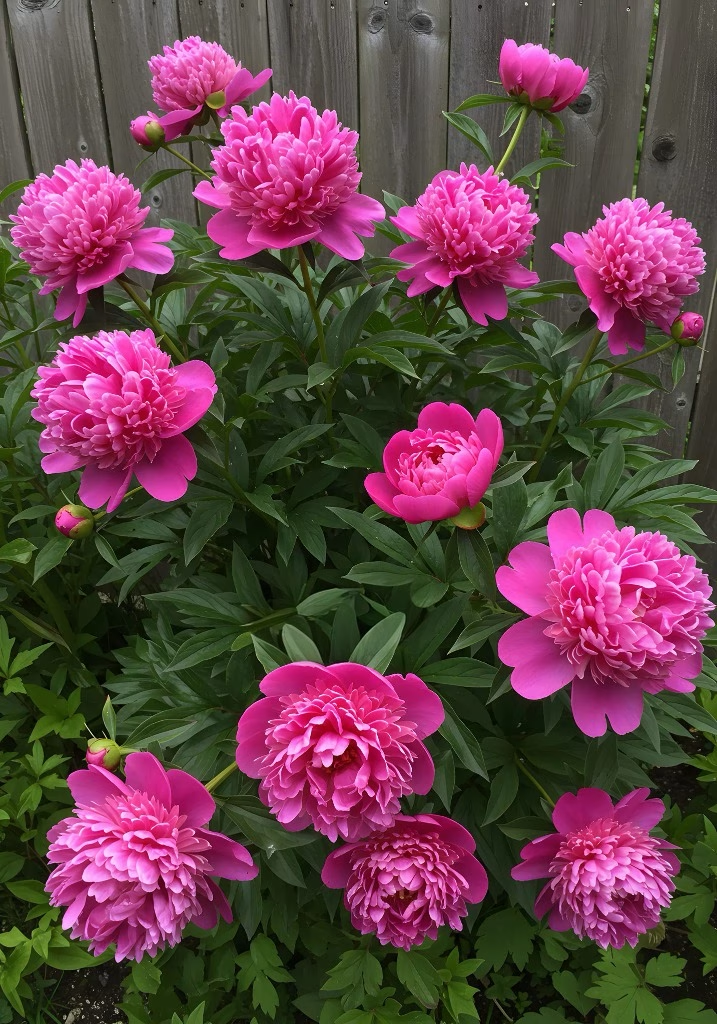Learn How to Grow Magnificent Paeonia lactiflora: The Complete Guide to Chinese Peonies
Paeonia lactiflora, commonly known as the Chinese Peony or Herbaceous Peony, stands as one of the most beloved and spectacular flowering perennials in gardens worldwide. These magnificent plants produce enormous, often fragrant blooms that can reach 6-8 inches across, creating a breathtaking display that has captivated gardeners for over 2,000 years. Whether you’re seeking classic pink varieties, pristine white specimens, or deep red cultivars, this comprehensive guide will teach you everything you need to know about successfully growing these stunning Chinese peonies.
What Makes Paeonia lactiflora Special?
Paeonia lactiflora belongs to the peony family (Paeoniaceae) and is native to China, Mongolia, and Siberia. What sets this species apart from other peonies is its incredible diversity of flower forms, colors, and fragrances, combined with exceptional cold hardiness and longevity. These herbaceous perennials die back to the ground each winter but return reliably each spring, often living and blooming for decades with proper care.
The flowers of Chinese peonies come in five distinct forms: single, semi-double, double, Japanese (anemone), and bomb-type. Colors range from pure white through various shades of pink to deep red, with some varieties featuring bicolor patterns or contrasting centers. Many cultivars produce intoxicating fragrances that can perfume entire garden areas during peak bloom.
Understanding Paeonia lactiflora’s Natural Habitat
To successfully grow Chinese peonies, understanding their native environment provides crucial insights. In the wild, Paeonia lactiflora thrives in the temperate regions of northern China and southern Siberia, where they experience:
Climate conditions:
- Cold winters with temperatures well below freezing
- Moderate summers with adequate rainfall
- Distinct seasonal changes with proper winter chill
- Well-draining soils that don’t waterlog
- Protection from extreme wind and heat
Growing environment:
- Rich, fertile soils with good organic content
- Excellent drainage to prevent root rot
- Full sun to partial shade exposure
- Adequate air circulation around plants
- Protection from late spring frosts
Essential Growing Requirements for Chinese Peonies
Climate and Hardiness Zones
Paeonia lactiflora is remarkably cold-hardy and actually requires winter chill hours to bloom properly. These peonies thrive in USDA hardiness zones 3-8, making them suitable for most temperate climates.
Temperature requirements:
- Winter chill: Requires 400-1000 hours below 45°F
- Spring growth: Emerges when soil temperatures reach 40-50°F
- Summer tolerance: Performs best in areas with moderate summer heat
- Optimal zones: USDA zones 3-7 for best performance
- Heat limitations: May struggle in zones 9-10 without special care
Sunlight and Positioning
Chinese peonies perform best in full sun to partial shade, with morning sun being particularly important for healthy growth and flowering.
Light requirements:
- Optimal exposure: 6-8 hours of direct sunlight daily
- Morning sun: Essential for drying dew and preventing disease
- Afternoon shade: Beneficial in hot climates (zones 7-8)
- Avoid deep shade: Results in weak stems and poor flowering
- Wind protection: Shelter from strong winds that can damage blooms
Soil Requirements and Preparation
Soil quality is perhaps the most critical factor in peony success. Chinese peonies demand well-draining, fertile soil with excellent organic content.
Ideal soil characteristics:
- Drainage: Well-draining soil that never waterlogged
- pH level: Slightly acidic to neutral (6.0-7.0)
- Organic matter: Rich in compost and organic materials
- Depth: Deep, loose soil allowing root penetration
- Fertility: Moderately fertile with balanced nutrients
Soil preparation process:
- Test existing soil pH and drainage
- Excavate planting area 18-24 inches deep and 3 feet wide
- Mix in 50% high-quality compost or well-aged manure
- Add coarse sand or perlite if drainage is poor
- Incorporate bone meal or rock phosphate for phosphorus
- Allow soil to settle for 2-4 weeks before planting
How to Plant Paeonia lactiflora Successfully
Click on “Next” to continue reading.


